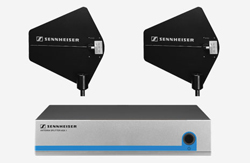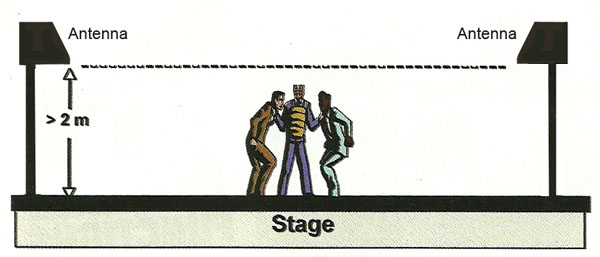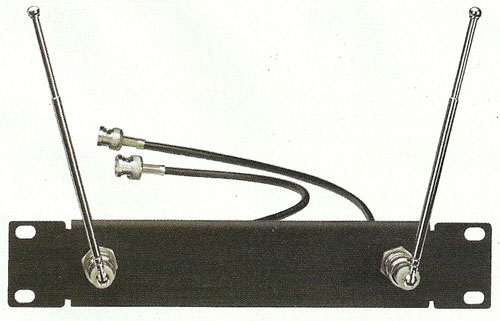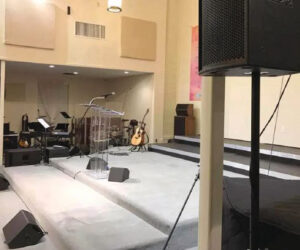The position of the antenna and the correct use of its related components—such as the radio frequency (RF) cable, antenna boosters, antenna attenuators, and antenna distribution systems—are key to trouble-free wireless microphone transmission.
The antennas act as the “eyes” of the receiver, so the best results can be achieved by forming a direct line of sight between the transmitter antenna and receiver antenna of the system. A large variety of antennas are available for wireless microphone systems.
The signal distribution of receiving antennas offers the greatest potential for system performance improvement. Receiving and transmitting antennas are available as omnidirectional and directional variants.
For receiving, omnidirectional antennas are often recommended for indoor use because the RF signal is reflected off of the walls and ceiling. When working outside, one should choose a directional antenna since there are usually little to no reflections outdoors, and this directivity will help to stabilize the signal.
In general, it is wise to keep an “antenna tool box” that contains both omnidirectional and directional antennas for use in critical RF situations, since they transmit and receive signals differently.
Omnidirectional antennas transmit or receive the signal by providing uniform radiation or response only in one reference plane, which is usually the horizontal one parallel to the earth’s surface. The omnidirectional antenna has no preferred direction and cannot differentiate between a wanted and an unwanted signal.
If a directional antenna is used, it will transmit or receive the signal in the path it is pointing towards. The most common types are the yagi antenna and the log-periodic antenna, which are often wide range frequency antennas covering the whole UHF range.
In an outdoor venue, the desired signal can be received and the unwanted signal from a TV station can be rejected to a certain degree by choosing the correct antenna position. A directional antenna also transmits or receives only in one plane, like an omnidirectional antenna.
Several types of omnidirectional and directional antennas also exist for specific conditions. The telescopic antenna is an omnidirectional antenna and often achieves a wide range (450-960 MHz).
If telescopic antennas are in use they should be placed within the line of sight of the counterpart antenna. They should not, for example, be mounted inside a metal flight case with closed doors as this will reduce the RF field strength from the transmitter and compromise the audio quality.
Audio performance will be raised considerably when remote antennas are used. A remote antenna is one which is separated from the receiver or transmitter unit. These antennas can be placed on a stand such as that for a microphone. This will improve the RF performance significantly. However, when using remote antennas, some basic rules need to be considered.
Once again, a clear line of sight should be established between the transmitter and receiver antenna. If a directional antenna is used, the position of the antenna and the distance to the stage are important. One common set-up is pointing both receiving antennas toward the center of the stage.
Directional and omnidirectional antennas do have a preferred plane, which is either the horizontal or vertical plane. If the polarization between the transmitter and receiver antenna is different, this will cause some significant loss of the RF level.
Unfortunately, it is not possible to have the same polarization of the antennas all of the time. In a theatrical application, the antenna is in a vertical position when the actress or actor walks on the stage. The polarization of the transmitter may change to the horizontal position if a scene requires the talent to lie down or crawl across the stage.
In this case, circular polarized antennas can help. These kinds of antennas can receive the RF signal in all planes with the same efficiency. Because the polarization of the antenna is critical and telescopic antennas are often used, it is not recommended to use the receiver antennas strictly in a horizontal or vertical plane. Rather, angle the antennas slightly as this will minimize the possibility that polarization would be completely opposite between transmitter and receiver.
One last note: The plural form for the type of antenna discussed in this article is “antennas.” Antennae are found on insects and aliens.
Volker Schmitt is a senior engineer for Sennheiser US, and Joe Ciaudelli also works with Sennheiser US and has a history of providing frequency coordination for large multi-channel wireless microphone systems used on Broadway and by broadcast networks.

















